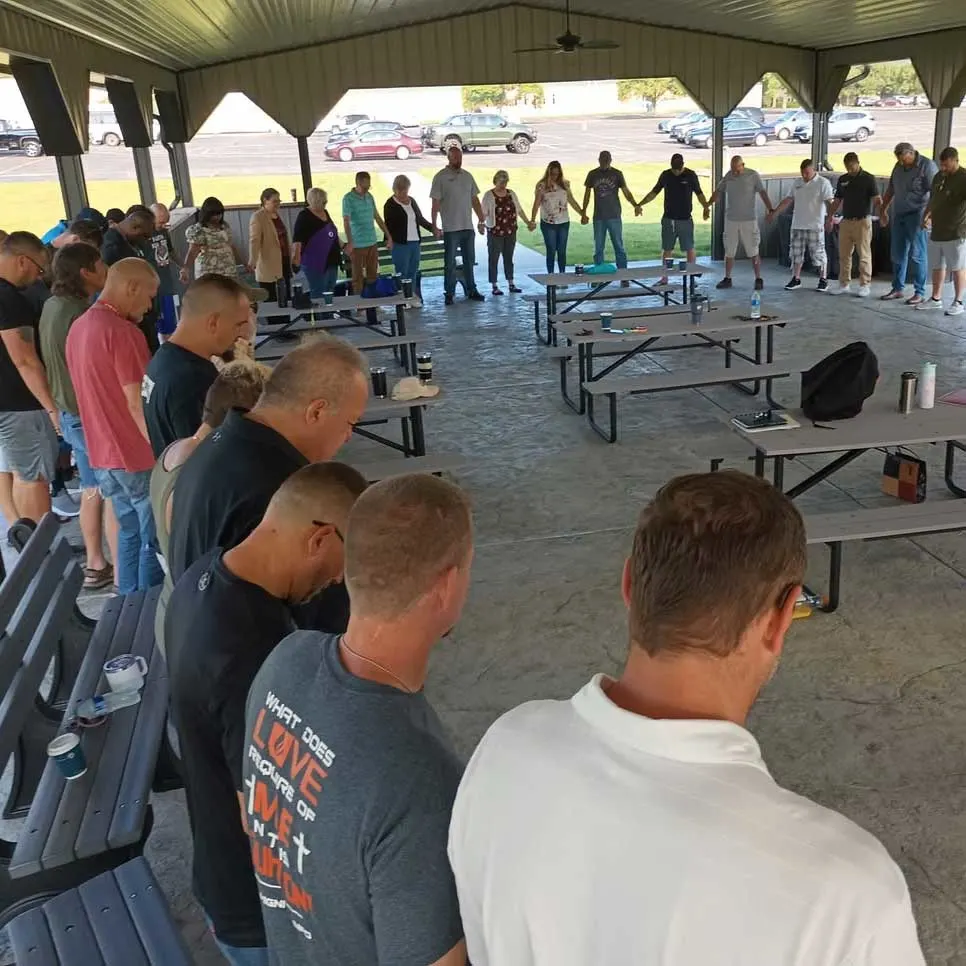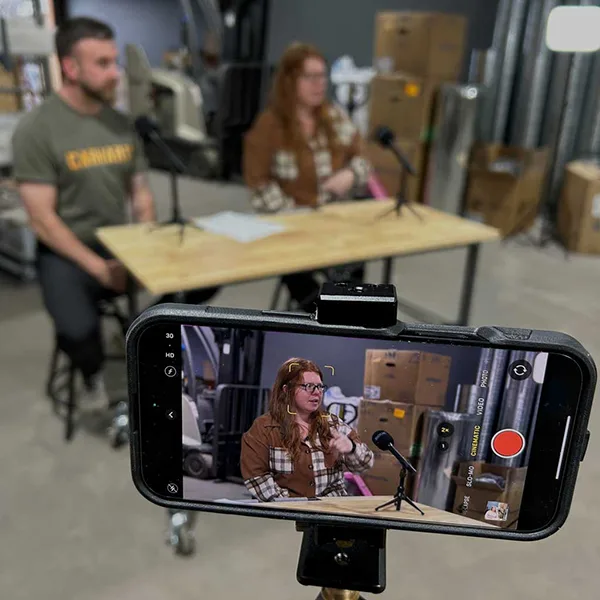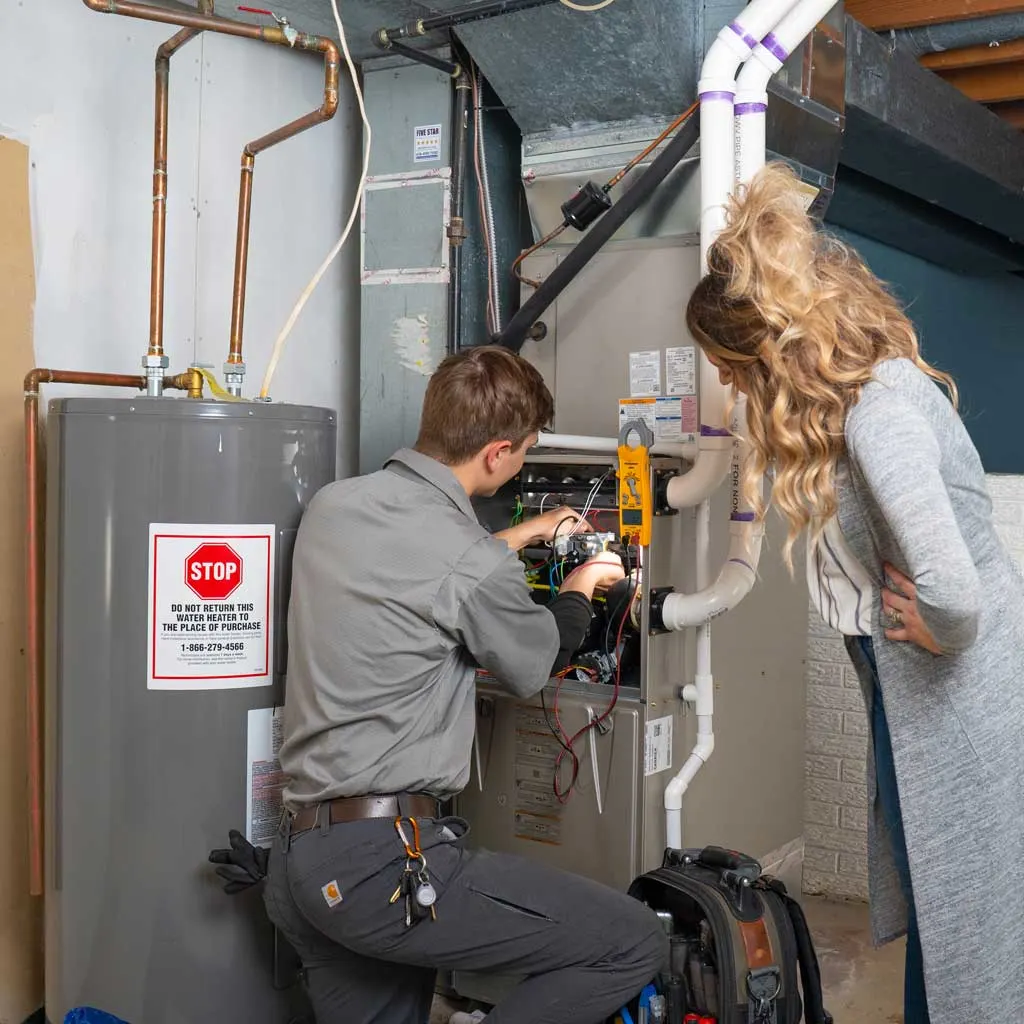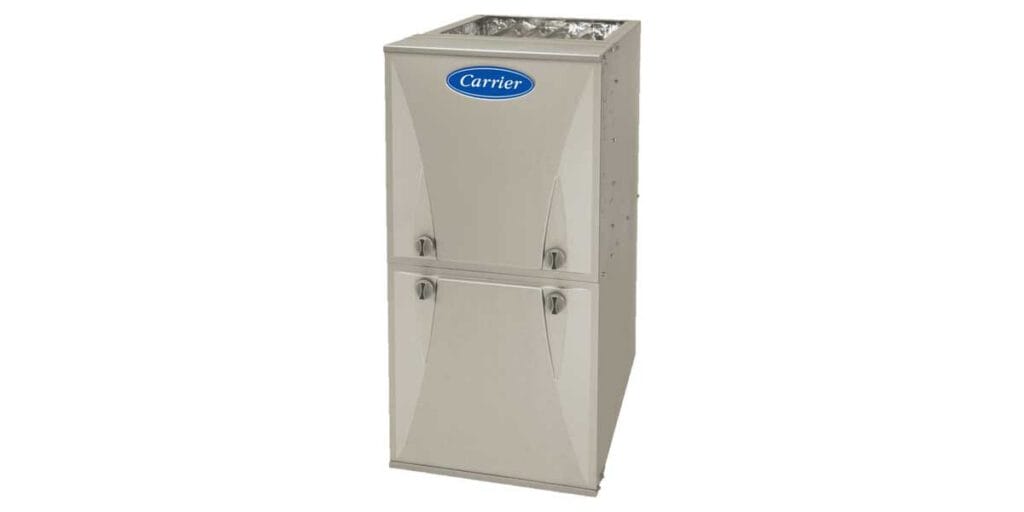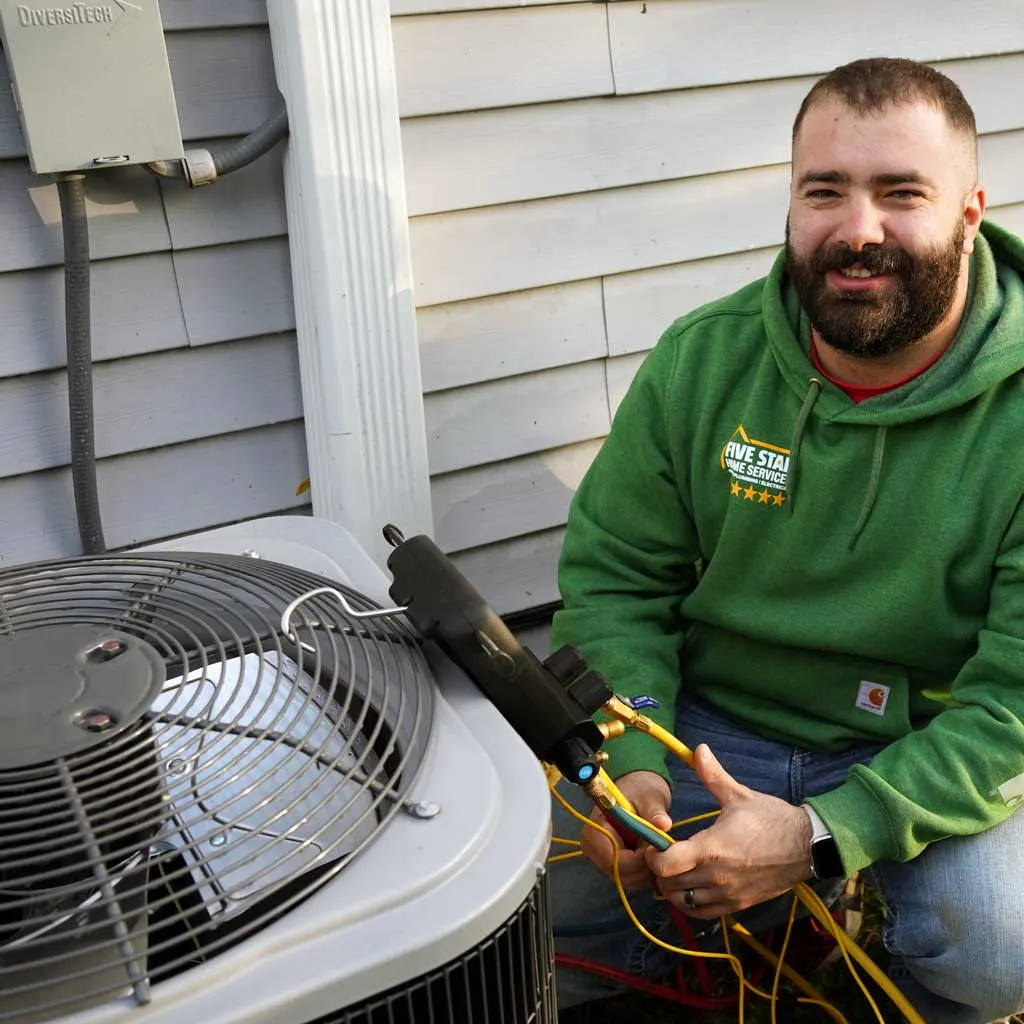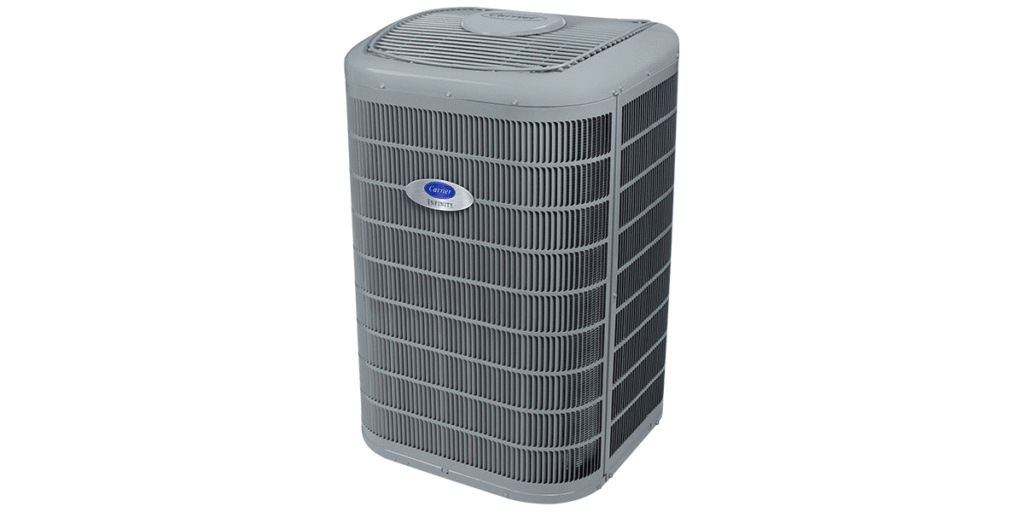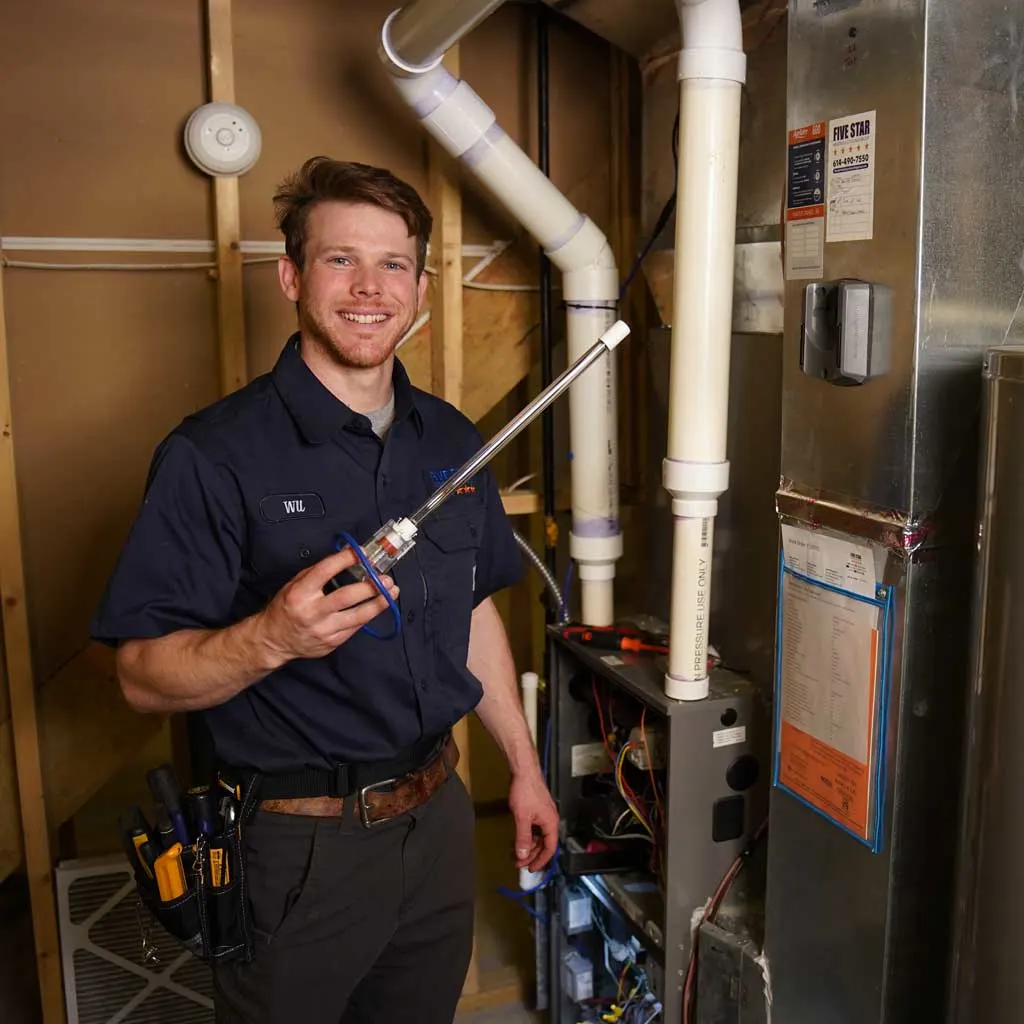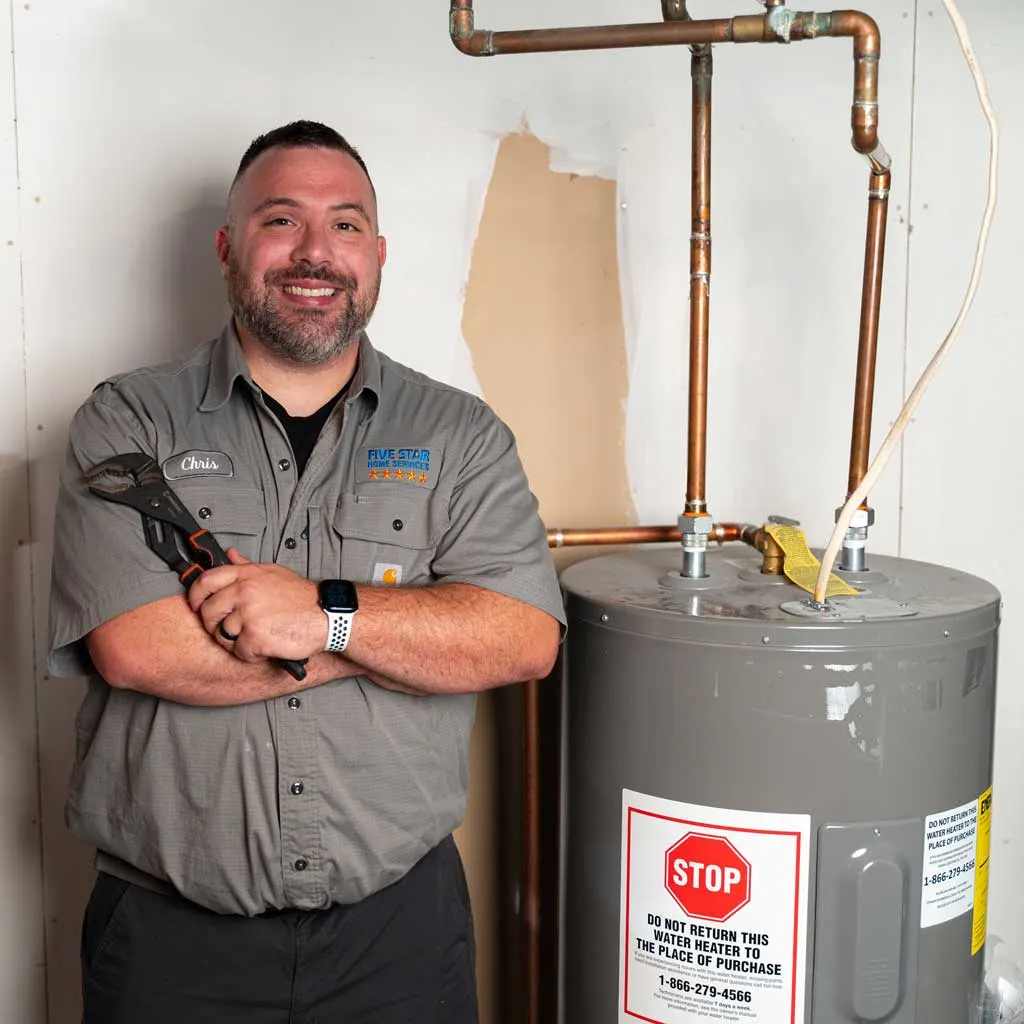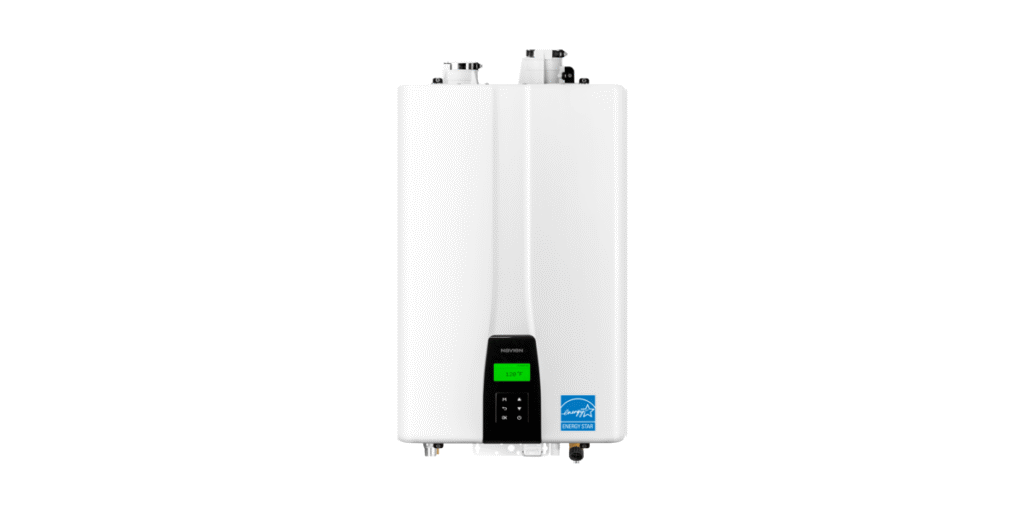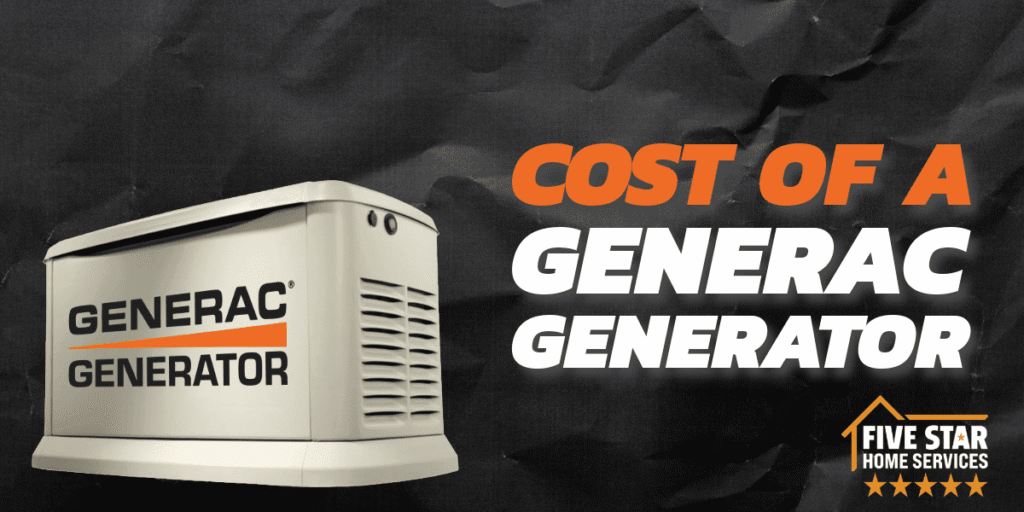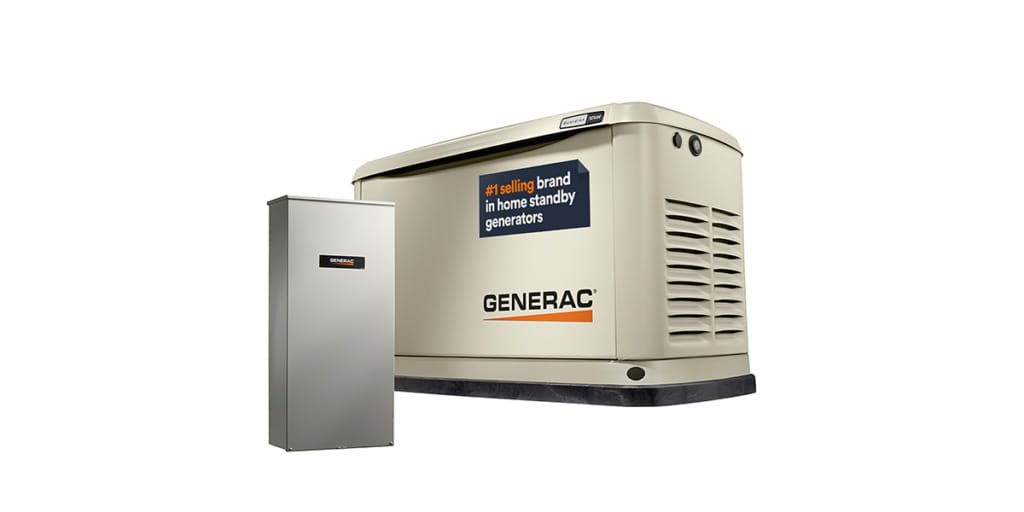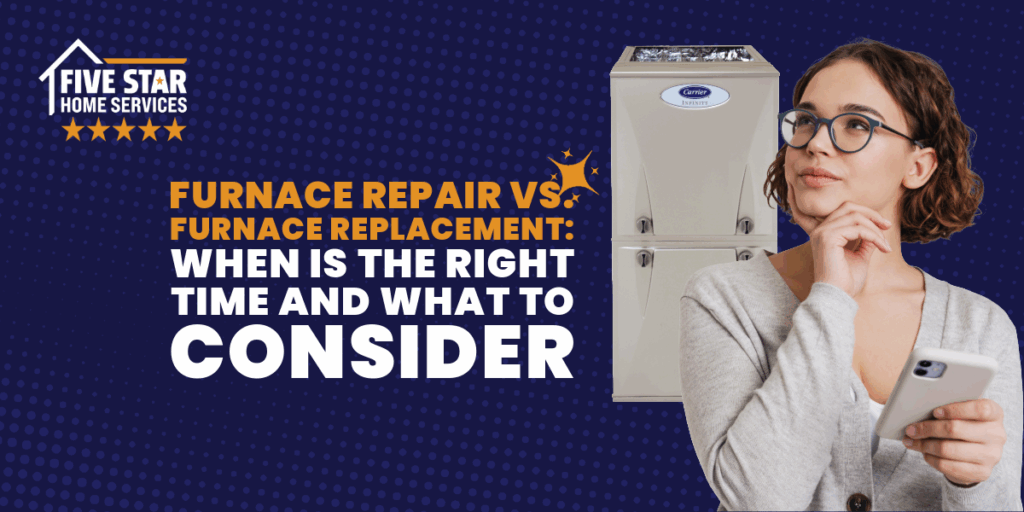Unsure if you should repair or replace your furnace? Our Ohio Furnace Buying Guide explains furnace lifespans, common warning signs, and how to decide between furnace repair vs furnace replacement.
Furnace Repair vs. Furnace Replacement
Furnace replacement. No one ever anticipates having to replace their furnace with enthusiasm.
That’s what Five Star is here for; we’re here to help!
In this guide, we’ll talk about how long a furnace typically lasts, the signs yours may need to be replaced, and most importantly, how to decide between furnace repair vs furnace replacement.
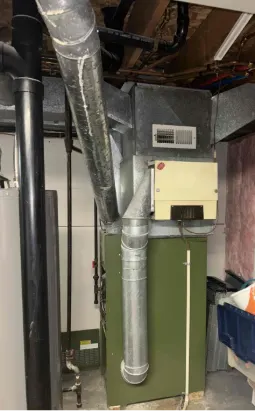
What Is the Average Lifespan of a Furnace?
Most furnaces last between 15–20 years. With regular maintenance, some systems can stretch beyond that range—but age and efficiency eventually catch up. Much like a car, older furnaces typically require more frequent repairs as they age.
What Factors Affect Furnace Lifespan?
Several things impact how long your furnace lasts, including:
- Maintenance habits: Annual tune-ups extend life expectancy.
- Usage: Ohio’s long winters often wear systems down faster.
- Furnace type and quality: Higher-end models typically last longer.
Why Are More Homeowners Replacing Furnaces Earlier?
In 2025, many homeowners are choosing furnace replacement before the 20-year mark. This is because new models offer:
- Higher energy efficiency (which lowers monthly bills)
- Improved comfort and airflow
- Better compliance with updated safety standards
Should I Only Consider the Upfront Cost?
Not necessarily. While furnace replacement does come with upfront investment, it’s important to look at the total cost of ownership. Older furnaces often mean:
- Rising repair costs each year
- Higher energy bills due to poor efficiency
- Greater risk of mid-winter breakdowns
By weighing long-term savings against short-term costs, homeowners often find that investing in a new furnace pays off with lower bills and peace of mind.
What Are the Signs You Need a New Furnace in Ohio?
The most common signs you need a new furnace in Ohio are age (15+ years), frequent repairs, higher energy bills, uneven heating, and strange noises or smells.
Your Furnace Is 15 Years or Older
Most furnaces last 15–20 years with regular maintenance. Once your system hits that age range, efficiency often drops, and repairs become more frequent.
You’re Scheduling Frequent Repairs
If you’re calling for service multiple times a year, the costs add up quickly. At a certain point, it’s more cost-effective to invest in a replacement than to keep repairing an outdated system.
Heating Bills Are Rising
A sudden increase in your monthly heating costs—even when your usage hasn’t changed—often points to declining furnace efficiency.
Your Home Has Uneven Heating
Cold spots in some rooms and overheated others usually mean your furnace is struggling to distribute warm air properly.
You Hear Strange Noises or Smell Unusual Odors
Banging, rattling, squealing, or burning smells are red flags that shouldn’t be ignored. They may point to failing parts or safety risks.
How Do I Decide Over Furnace Repair vs Furnace Replacement?
This is the number one question homeowners ask. So, what’s the answer? Well, to be completely honest, there are several factors to be considered in the overall decision-making of furnace replacement vs furnace repair:
- Is it safe to keep repairing an old, outdated furnace?
- Will my furnace make it another winter?
- When is the best time to replace a furnace?
- Is it smart to keep investing in an older furnace?
- What are the new furnace standards in 2025?
Comparing Repair Costs vs Replacement Costs
A simple rule of thumb is this: if a repair costs more than 50% of the price of a new furnace, replacement is usually the smarter choice.
- Furnace repair costs can range from a few hundred dollars for minor fixes to well over $1,000 for major parts like heat exchangers or blower motors.
- Furnace replacement costs are higher upfront, but new systems offer lower energy bills, fewer service calls, and better efficiency standards—especially with 2025 updates.
While repairs may seem cheaper in the short term, older furnaces often need repeat service, turning into a “money pit.” In many cases, investing in a new, energy-efficient unit saves homeowners more over the next 5–10 years than continuing to repair an outdated system.
Is It Safe to Keep Repairing an Old Furnace?
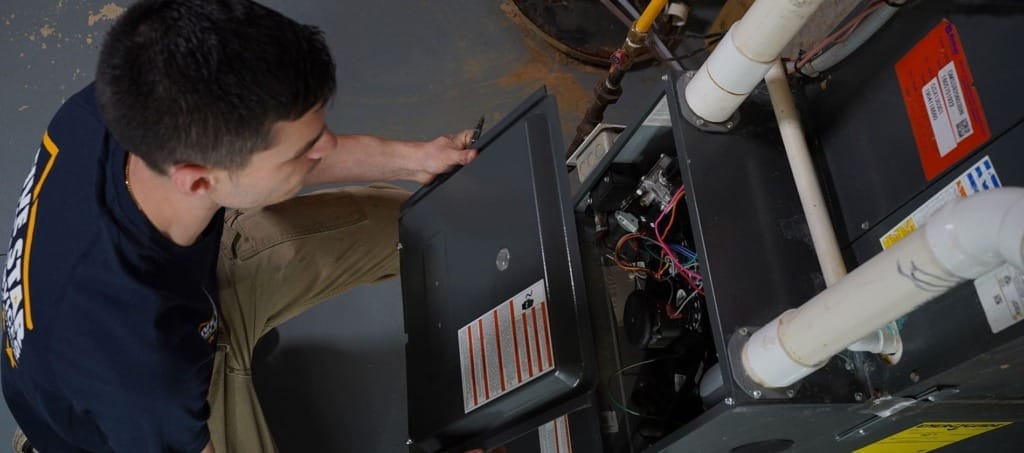
Minor repairs are fine for newer furnaces, but if you’re scheduling service every season, replacement is usually the smarter investment. Older systems not only waste money on frequent fixes but can also pose serious safety risks.
Safety concerns with aging furnaces:
Cracks in the heat exchanger may lead to dangerous carbon monoxide leaks, while worn-out parts and outdated wiring increase the chance of breakdowns during Ohio’s coldest months. If your furnace is 15–20 years old, a professional HVAC inspection can help determine if replacement is the safest choice for your home and family.
Why Peace of Mind Matters in the Repair vs Replacement Decision
When deciding between furnace repair and furnace replacement, peace of mind is one of the most important factors Ohio homeowners should consider.
Old furnaces may still run after a repair, but…
- Risk of unexpected breakdowns
- Expensive emergency service calls
- Safety hazards like carbon monoxide
Benefits of a new furnace:
- Lower monthly energy bills
- Consistent, reliable heating
- Comfort and security during Ohio’s coldest nights
An old furnace may still run after a repair, but the constant worry about unexpected breakdowns, costly emergency service calls, or safety hazards like carbon monoxide leaks can outweigh the short-term savings. Knowing your heating system is reliable gives you peace of mind, comfort, and security during Ohio’s coldest nights, something we firmly believe every homeowner deserves.
Will My Furnace Make It Through Another Winter in Ohio?
Did you breathe a sigh of relief when last winter ended? Maybe your heating bills were higher than usual, or your furnace struggled to keep up on the coldest nights. If that sounds familiar, now is the perfect time to start planning before another Ohio winter arrives.
Ask yourself: did your furnace struggle last winter?
Warning signs of furnace trouble include:
- Uneven heating
- Loud noises
- Frequent cycling
- Rising energy bills
A quick repair might keep it going, but ongoing issues signal bigger problems. Ohio winters are unpredictable—counting on an aging furnace could leave your family cold when you need heat most.
When Is the Best Time to Replace a Furnace in Ohio?
Generally speaking, late summer and early fall are the best times for furnace replacement. Schedules are more open, the weather is not too hot and not cold, and you’ll avoid the stress of a mid-winter emergency installation….because let’s be honest; no one wants to wait until their furnace goes out in the middle of winter.
How Do the New Standards in 2025 Impact Older Furnaces?
With the energy efficiency and safety standards taking effect in 2025, many older furnaces in Ohio will no longer meet current requirements. While your existing system may still run, it could be operating at a much lower efficiency compared to today’s models, costing you more in heating bills each month.
What this means for homeowners:
- Older systems may still run, but at much lower efficiency.
- Higher heating bills each month.
- Increased risk of repairs and compliance issues.
Why the standards matter:
- Improve comfort and safety.
- Reduce wasted energy.
- Lower long-term operating costs.
Upgrading benefits:
- Meets 2025 standards.
- Better performance & reliability.
- Quieter operation.
- Greater peace of mind through Ohio winters.
With HVAC efficiency standards rising in 2025, many families are upgrading proactively rather than waiting until their system quits.
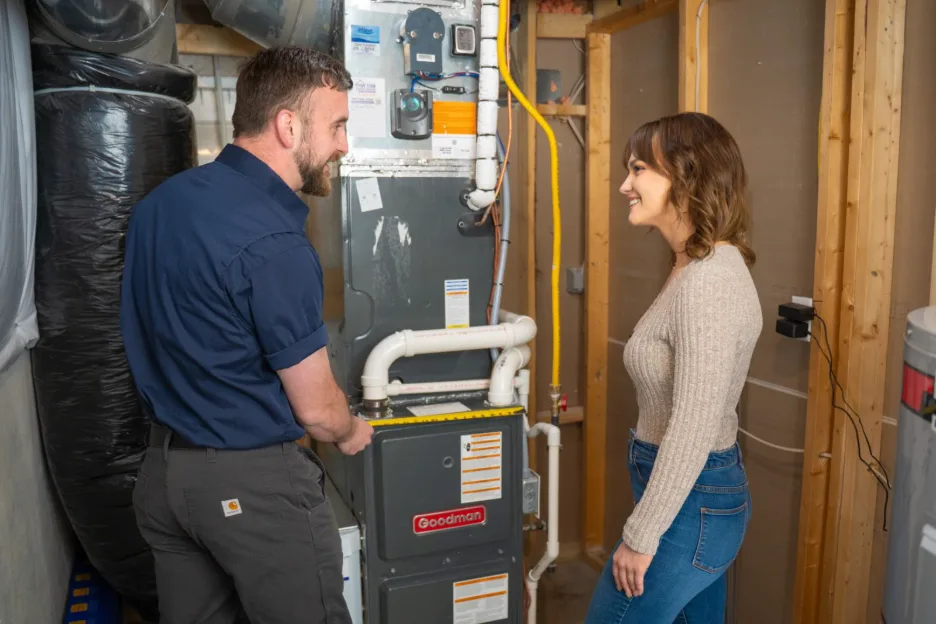
Stress-Free Furnace Replacement with Five Star Home Services
Furnace replacement doesn’t have to feel overwhelming. Five Star is here to walk you through the decision, answer every question, and make sure your family stays warm all winter. With our Five Star Promise of fast service, accountability, transparency, and purpose, you’ll know you made the right call. Whether you live in Columbus, Dayton, or Cincinnati, Ohio winters can be brutal without a reliable furnace. Luckily, you can count on us!
Are you ready to explore your options? Call Five Star Home Services today at (833) 405-8009 or book your own appointment online for a free estimate.
FAQs
How long should a furnace last?
Most furnaces last 15 to 20 years with regular maintenance. In Ohio, heavy winter use often means efficiency drops and repairs increase once the system hits that age range.
Should I repair or replace my furnace?
If your furnace is newer and the repair is minor, fixing it makes sense. But if it’s older, breaking down often, or repairs cost more than half the price of a new system, replacement is usually the smarter choice.
When is the best time to replace a furnace?
Late summer and early fall are ideal for furnace replacement in Ohio. You’ll avoid mid-winter emergencies and often find better scheduling and seasonal promotions.

